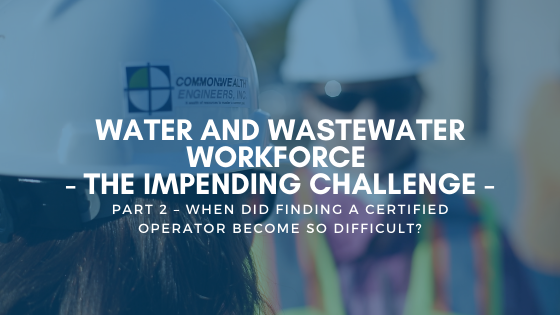Water and Wastewater Workforce – the Impending Challenge Part 2 – When did Finding a Certified Operator Become so Difficult?

The Bureau of Labor Statistics (BLS) has projected that 8.2 percent of existing water and wastewater operators will need to be replaced annually between 2016 and 2026 (Source: https://www.gao.gov/assets/690/689621.pdf). Limited information is available to determine whether retirements, or other workforce needs, are affecting drinking water and wastewater utilities’ abilities to comply with the Safe Drinking Water and Clean Water Acts or if there is a correlation between unmet workforce needs and compliance problems. Nonetheless, commonsense would indicate it is not helping. Recruiting operators through word of mouth, websites, newspapers, and partnering with local technical schools can prove successful to various degrees. However, even with these approaches, smaller utilities often find it difficult to hire experienced certified operators and instead often hire and train entry-level employees. This presents the utility with a “gap of service,” whereby a certified operator is required to oversee, train, and address Monthly Reports of Operations (MROs) on behalf of the entry-level employees until they are capable of performing these activities themselves.
If you would like to read part 1 of “Water and Wastewater Workforce – The Impending Challenge” Click Here
